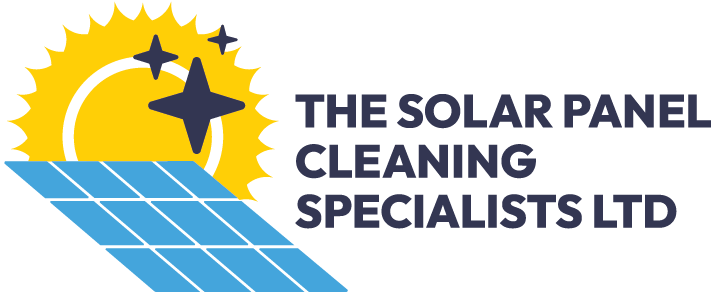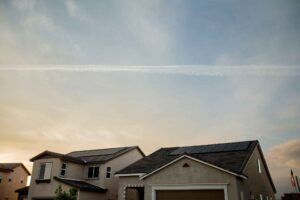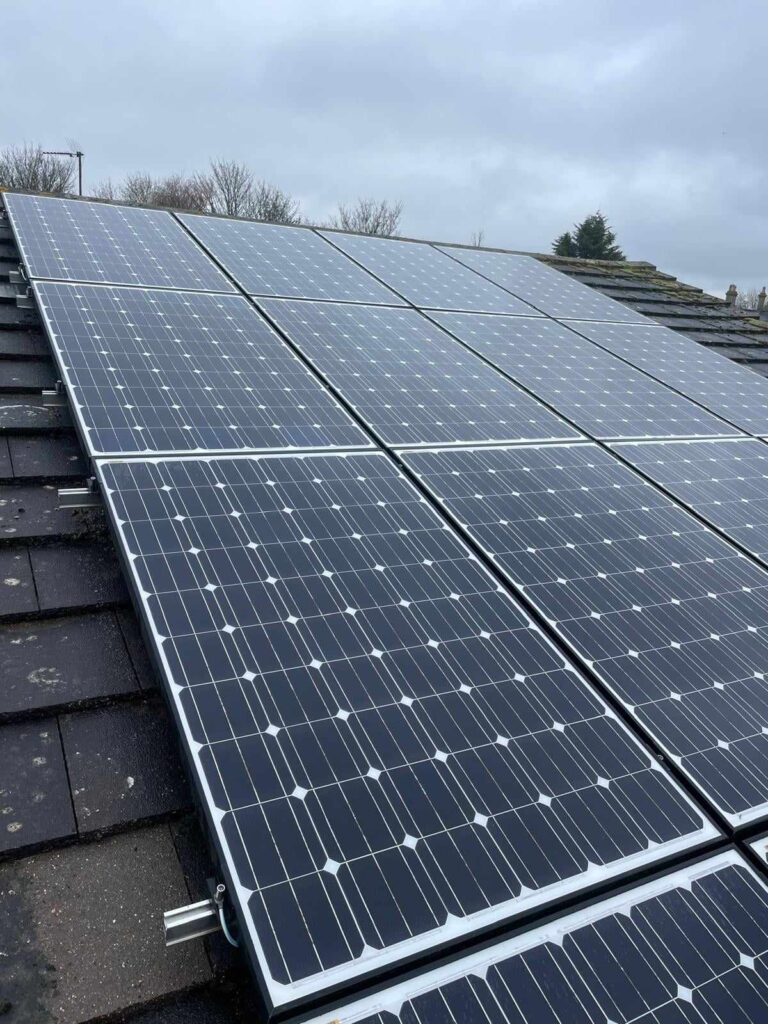Solar energy has become an increasingly popular and viable source of renewable electricity, with solar panel installations growing rapidly worldwide. However, maintaining the efficiency and performance of these solar panels is crucial for maximising their energy output. One of the key challenges faced by solar panel owners and operators is the task of keeping their panels clean and free from various environmental factors that can impede their performance. In this article, we will explore the common solar panel cleaning challenges and discuss strategies to overcome them.
The importance of maintaining clean solar panels cannot be overstated. Dust, dirt, bird droppings, and other debris can accumulate on the panel surfaces, reducing their ability to absorb sunlight and convert it into electrical energy. This can lead to a significant drop in the overall energy production of the solar system, ultimately affecting the return on investment for the solar panel owner. Additionally, neglecting regular cleaning can accelerate the wear and tear of solar panel components, leading to premature degradation and the need for costly repairs or replacements.
In this comprehensive guide, we will delve into the various challenges associated with solar panel cleaning, including dust and dirt accumulation, bird droppings and debris, shading from nearby structures, environmental factors such as rain, snow, and humidity, as well as accessibility and safety concerns. We will also explore the different cleaning methods and techniques, the importance of maintaining a regular cleaning schedule, and provide practical strategies for overcoming these challenges to ensure the optimal performance of solar panel systems.
Key Takeaways
- Dust and dirt accumulation can reduce the efficiency of solar panels and should be regularly cleaned.
- Bird droppings and debris can block sunlight and should be promptly removed to maintain optimal performance.
- Shading from nearby structures can significantly impact solar panel output and may require strategic cleaning and maintenance.
- Environmental factors such as rain, snow, and humidity can affect the cleanliness of solar panels and should be considered in maintenance schedules.
- Accessibility and safety concerns should be carefully addressed when planning for solar panel cleaning to prevent accidents and damage.
Dust and dirt accumulation
One of the most common challenges faced in solar panel cleaning is the accumulation of dust and dirt on the panel surfaces. This issue can be particularly prevalent in areas with high levels of airborne particulates, such as those near construction sites, industrial zones, or in regions with frequent dust storms. Even in relatively clean environments, the gradual buildup of dust and dirt can have a significant impact on the efficiency of solar panels.
The primary causes of dust and dirt accumulation on solar panels are the proximity to dusty or polluted environments and the lack of regular cleaning. In areas with high levels of air pollution or construction activity, the panels can quickly become coated with a layer of fine particles, reducing the amount of sunlight that can reach the photovoltaic cells. Additionally, if solar panels are not cleaned regularly, the gradual buildup of dust and dirt can have a cumulative effect, further diminishing the panel’s ability to absorb and convert solar energy.
The impact of dust and dirt on solar panel efficiency is twofold. First, the accumulated particles on the panel surface can block a portion of the incoming sunlight, reducing the amount of light that reaches the photovoltaic cells. This, in turn, leads to a decrease in the overall energy generation of the solar system. Secondly, the buildup of dust and dirt can accelerate the wear and tear of the solar panel components, such as the glass or protective coatings, leading to premature degradation and the need for more frequent maintenance or replacement.
Bird Droppings and Debris
Another significant challenge in solar panel cleaning is the presence of bird droppings and other organic debris on the panel surfaces. Birds, attracted to the elevated and often isolated locations of solar panel installations, can leave behind their droppings, which can be particularly problematic for solar panel owners.
The challenges posed by bird droppings and organic debris are twofold. Firstly, the physical presence of these materials on the panel surfaces can block sunlight, reducing the overall energy output of the solar system. Additionally, the chemical composition of bird droppings, which can contain acids and other corrosive elements, can potentially damage the solar panel surfaces over time, leading to a decrease in their efficiency and lifespan.
Addressing the issue of bird droppings and organic debris requires a multi-faceted approach. One effective strategy is to install deterrents, such as spikes or reflective devices, to discourage birds from nesting or perching on the solar panels. Additionally, implementing a regular cleaning schedule to remove any accumulated droppings or debris can help mitigate the impact on the solar panel’s performance.
When dealing with stubborn stains or heavily soiled panels, specialized cleaning techniques may be necessary. This could involve using mild detergents or solvents and applying gentle scrubbing or pressure washing methods to ensure the complete removal of the contaminants without causing damage to the panel surfaces.
Shading from Nearby Structures
Another challenge in solar panel cleaning is the issue of shading caused by nearby structures, such as trees, buildings, or other obstructions. Shading can occur due to the proximity of these structures or as a result of seasonal changes in the position of the sun throughout the year.
The primary causes of shading on solar panels are the presence of nearby trees, buildings, or other obstructions that can block the direct sunlight from reaching the panel surfaces. Additionally, the changing position of the sun throughout the day and the seasons can result in partial shading on the solar panels, particularly in the early morning or late afternoon hours.
The impact of shading on solar panel performance is significant, as it can lead to a substantial reduction in the overall energy output of the solar system. When a portion of a solar panel is shaded, the affected cells are unable to generate their full potential, which can create an imbalance in the system and reduce overall energy production. In some cases, this partial shading can also lead to the development of hot spots on the panel, accelerating the degradation of the solar panel components.
To address the challenge of shading, solar panel owners and operators can consider strategies such as strategic placement and orientation of the panels, as well as the regular trimming or removal of nearby vegetation that may be causing the shading. Additionally, the use of advanced technologies, such as microinverters or power optimisers, can help mitigate the impact of partial shading by optimising the performance of individual solar panels within the system.
Environmental factors: rain, snow, and humidity
| Challenges | Description |
|---|---|
| Dust and Debris | Accumulation of dust, dirt, and debris on the solar panels can reduce their efficiency. |
| Bird Droppings | Bird droppings can create a layer of grime that blocks sunlight from reaching the solar panels. |
| Hard Water Stains | Mineral deposits from hard water can leave unsightly stains on the solar panels, affecting their performance. |
| Pollen and Leaves | Pollen and leaves can accumulate on the panels, hindering their ability to capture sunlight. |
Solar panel cleaning is also influenced by various environmental factors, such as rain, snow, and humidity, which can present their own unique challenges.
The accumulation of water, snow, or ice on the solar panel surfaces can have a significant impact on their performance. During periods of heavy rain or snowfall, the panels may become partially or fully obscured, reducing the amount of sunlight that can reach the photovoltaic cells. Additionally, the presence of moisture can increase the risk of corrosion and mould growth on the panel components, further compromising their efficiency and lifespan.
In regions with high humidity levels, the solar panels may also be susceptible to the buildup of condensation, which can lead to the formation of water droplets on the panel surfaces. This can create a refractive effect, scattering the incoming sunlight and reducing the overall energy generation of the solar system.
To address these environmental challenges, solar panel owners and operators can implement strategies such as proper panel tilting and orientation to facilitate the natural shedding of water, snow, or ice. Additionally, regular cleaning and maintenance routines, including the use of specialised cleaning solutions or techniques, can help mitigate the impact of environmental factors on the solar panel’s performance.
Accessibility and safety concerns
One of the significant challenges in solar panel cleaning is the issue of accessibility and safety concerns. Many solar panel installations are located on rooftops or other elevated structures, making it difficult and potentially dangerous for cleaning personnel to access the panels.
The difficulties in accessing solar panels for cleaning can stem from several factors, including the height and location of the installation, the presence of obstacles or narrow spaces, and the lack of proper safety equipment or infrastructure. In some cases, solar panels may be installed in remote or hard-to-reach areas, further complicating the cleaning process.
Prioritising the safety of cleaning personnel is of utmost importance when addressing accessibility challenges. Proper safety equipment, such as harnesses, ladders, and fall protection systems, must be used to ensure the well-being of the cleaning crew. Additionally, adherence to local regulations and industry best practices, such as the use of trained and certified professionals, can help mitigate the risks associated with solar panel cleaning.
By addressing the accessibility and safety concerns, solar panel owners and operators can ensure that their cleaning efforts are carried out efficiently and without compromising the safety of the personnel involved. This, in turn, can help maintain the optimal performance and longevity of the solar panel system.
Cleaning methods and techniques
To effectively address the various challenges in solar panel cleaning, a range of cleaning methods and techniques have been developed. These approaches vary in their effectiveness, efficiency, and the level of effort required, allowing solar panel owners and operators to choose the most suitable option based on their specific needs and circumstances.
One of the most common cleaning methods is manual cleaning, which involves the use of water and mild detergents to remove accumulated dust, dirt, and debris from the panel surfaces. This approach can be effective, but it can also be labour-intensive and time-consuming, especially for larger solar panel installations.
In recent years, the development of automated cleaning systems and robotic solutions has provided an alternative to manual cleaning. These systems, which can be integrated into the solar panel installation, use specialised cleaning mechanisms, such as brushes or water jets, to clean the panels without the need for manual intervention. These automated solutions can be particularly beneficial for hard-to-reach or large-scale solar panel installations, as they can improve the efficiency and consistency of the cleaning process.
When selecting the appropriate cleaning method, solar panel owners and operators must consider factors such as the type of solar panel, the local environmental conditions, and the specific cleaning requirements. Additionally, the choice of cleaning tools and materials, such as the type of detergent or the pressure of the water jet, can have a significant impact on the effectiveness and safety of the cleaning process.
By understanding the various cleaning methods and techniques available, solar panel owners and operators can develop a tailored cleaning strategy that addresses the unique challenges of their solar installation, ensuring optimal energy production and the longevity of their solar panel system.
Maintenance schedules and frequency
Maintaining a regular cleaning schedule is crucial for ensuring the optimal performance and longevity of solar panel systems. Neglecting regular cleaning can lead to a gradual decline in the energy output of the solar panels, as well as the accelerated degradation of their components.
The importance of regular solar panel cleaning cannot be overstated. By keeping the panels free from dust, dirt, and other contaminants, solar panel owners and operators can maintain the maximum energy production of their solar system, ultimately leading to a better return on their investment. Additionally, proactive cleaning can help extend the lifespan of the solar panels, reducing the need for costly repairs or replacements.
The frequency of solar panel cleaning is influenced by a variety of factors, including the local environmental conditions, the type of solar panel installation, and the manufacturer’s recommendations. In areas with high levels of dust, pollution, or frequent bird activity, more frequent cleaning may be necessary to maintain the panel’s efficiency. Similarly, solar panels installed in harsh environments, such as coastal regions or areas with heavy snowfall, may require more regular cleaning to address the impact of environmental factors.
By developing a comprehensive maintenance schedule and adhering to industry standards and manufacturer guidelines, solar panel owners and operators can ensure that their solar installations are consistently performing at their best, maximising the benefits of their renewable energy investment.
Overcoming solar panel cleaning challenges
In conclusion, the challenges associated with solar panel cleaning are multifaceted and require a comprehensive approach to address. From the accumulation of dust and dirt to the impact of environmental factors and accessibility concerns, solar panel owners and operators must be proactive in maintaining the cleanliness and efficiency of their solar installations.
Throughout this article, we have explored the various challenges faced in solar panel cleaning, including dust and dirt accumulation, bird droppings and debris, shading from nearby structures, environmental factors such as rain, snow, and humidity, as well as accessibility and safety concerns. We have also discussed the different cleaning methods and techniques available, as well as the importance of maintaining a regular cleaning schedule to ensure the optimal performance and longevity of solar panel systems.
By understanding these challenges and adopting effective cleaning strategies, solar panel owners and operators can overcome the obstacles to maintaining clean and efficient solar panels. This, in turn, will lead to increased energy production, reduced maintenance costs, and a better return on their renewable energy investment.
As the demand for solar energy continues to grow, solar panel owners and operators must prioritise the maintenance and cleaning of their solar installations. By staying proactive and addressing the common solar panel cleaning challenges, they can ensure that their solar systems are operating at their full potential, contributing to a more sustainable and environmentally friendly energy future.



